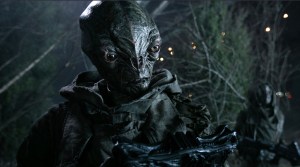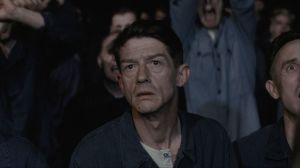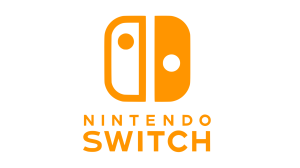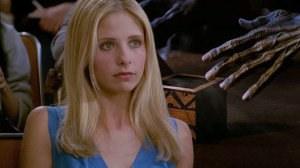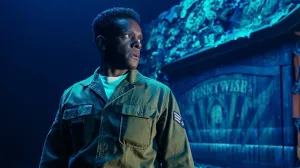The Clone Wars were introduced into Star Wars canon with a single line in the original film, Luke Skywalker asking Obi-Wan “Old Ben” Kenobi if he fought in them. It took 25 years for Star Wars fans to get any further exploration of the conflict that pre-dated the rise of the Galactic Empire and “the dark times.” Then, they got two tellings of the war that often contradicted one another. Star Wars: The Clone Wars — the animated series that finally concluded after a decade of releases, cancellations, and returns with its seventh season on Disney+ in 2020 — is the best-known version and the one that is part of Disney’s new Star Wars canon.
Videos by ComicBook.com
However, in 2003, five years before Star Wars: The Clone Wars debuted, Lucasfilm launched the Clone Wars multimedia project. This initiative saw the Star Wars Expanded Universe chronicling the Clone Wars conflict between its beginning in Attack of the Clones in 2002 and end with the release of Revenge of the Sith in 2005. The crown jewel of that project was Genndy Tartakovsky‘s Star Wars: Clone Wars series, now a part of Disney+’s Star Wars: The Vintage Collection. With that “2D micro-series” becoming available to stream for the first time, it seemed like the perfect moment to revisit that original telling of the Clone Wars, which has a strikingly different, darker tone than its successor.
Lucasfilm used the template it established with Shadows of the Empire in 1998 for the Clone Wars multimedia project, telling an interconnected tale across various mediums. While Shadows of the Empire was limited to a single novel, one comic book series, and a Nintendo 64 video game, the Clone Wars project had multiple releases in each of those formats, plus the animated series. I didn’t read the seven Clone Wars novels released as part of the project because life is too short (though maybe I’ll give Shatterpoint a shot when it gets re-released as part of the Essential Legends line later this year). The remastered edition of Republic Commando, the best-remembered video game attached to the project, was only just released, and I haven’t had time to dig into it. But the animated series is now readily available on Disney+, and the comics involved in the project — chiefly Star Wars: Republic — are available to read via Marvel Unlimited or purchase on Comixology. I indulged in both.
The 2008 animated series certainly takes on wartime themes, particularly regarding the Jedi’s role, but it still presents itself as a children’s adventure series. The most striking difference in the Clone Wars multimedia project is how much the stories stress that this is a war, first and foremost. The Tartakovsky series is less than two-and-a-half hours long in total and is still intended for children and thus a bloodless affair. Yet the focus on combat, the sheer numbers of troops involved, the amount of detail put into how the clone troopers fight in close combat all speak to attempt to reinforce the war’s scale and depict it as a military conflict.
While the animated series serves to drive home the Clone War’s scale, Star Wars: Republic attempts to give the conflict a sense of realism and cost. As a showcase of Tartakovsky’s animation style, the show’s emphasis was as much on the Jedi using their power and pulling off impossible acrobatics as it was on the details of clone trooper behavior. Republic still had lightsaber duels because, of course, but it’s a much less glamorous affair.
Republic pulls on threads similar to those focused on in the 2008 animated series. It shows that the Jedi choosing to abandon their roles as peacekeepers to become generals was the beginning of their end. It highlights how conflicted many Jedi felt about the war and underscores the cost that choice inflicted on the galaxy. It gives the clones that fought by the Jedi’s sides personality. But it goes more in-depth and darker than the 2008 series does.
One example is the two-part “The New Face of War” story from Republic #51 and #52. The story introduces the villains Asajj Ventress, Dooku’s disciple, and Durge, a mighty bounty hunter. Both would appear in Tartakovsky’s series, though with vastly different personalities and backstories. Ventress would get another backstory do-over in the 2008 series, and Durge will get his reboot in the new canon in an upcoming Marvel Comics release.

Obi-Wan Kenobi and Anakin Skywalker first encounter the duo during “The Battle of Ohma-D’un,” which takes place on a Gunan colony on one of Naboo’s moons. They discover that the entire Gungan population is dead, wiped out by an experimental chemical weapon deployed by the Separatists. Yes, Star Wars has dealt in mass murder since the Death Star blew up Alderaan in the first film. But that was a bloodless affair. Rarely, if ever, has the current Star Wars canon depicted a war crime so starkly.
One character epitomizing the difference in tone between the two takes on the Clone Wars is Alpha, one of the ARC troopers who fights alongside Obi-Wan and Anakin for a time in Republic. He’s a stark contrast from Rex, the character who fills that role in the 2008 animated series (Rex was going to be Alpha, but George Lucas felt the series had too many “A” name between Anakin, Artoo, and Ahsoka, and so Rex came into being). Rex is a good soldier, loyal to his Jedi leaders and clone brothers but not unempathetic or unthinking. Alpha is much more like his progenitor, Jango Fett, in that he willingly embraces the sometimes callous choices and sacrifices that come with fighting a war.

When it wasn’t filling in the blanks in Obi-Wan and Anakin’s timeline, Republic focused primarily on Quinlan Vos. He’s a Jedi conflicted enough to make Anakin Skywalker seem stable. Truthfully, it seemed like no one could mention Quinlan Vos without also talking about how he “has always had darkness within in” or “has always walked in darkness.” Writer John Ostrander (creator of the modern Suicide Squad) and artist Jan Duursema told Quinlan’s story, making him both the personification of Republic‘s version of the Jedi’s internal conflict during the Clone Wars and a parallel to Anakin’s story.
Quinlan’s former master, the Jedi spymaster Tholme, sends Quinlan undercover, first as a criminal to gather information and then as a double agent infiltrating Dooku’s camp. To convince Dooku that he’s loyal, Quinlan has to embrace that darkness everyone keeps talking about, and eventually, he comes perilously close to falling to the Dark Side.

As with Anakin, Quinlan falls in love. For Quinlan, it’s with Khaleen; a contact turned agent turned lover who becomes pregnant with his child. But rather than driving him towards the darkness, it’s ultimately Khaleen who brings Quinlan back to the light, though only after he duels his former master over a pit of lava (not kidding). When Anakin loses everything to the darkness, Quinlan not only recovers himself, he manages to escape Order 66, reunite with Khaleen, and see his child born.
Star Wars: Republic isn’t a comic that everyone will love. As mentioned, it embraces the darkness. If you prefer your Star Wars with a lighter tone, then you’d best steer clear. But if you check out Star Wars: Clone Wars on Disney+ and want more stories in the same vein, it’s worth giving a read on the digital platforms where it’s available, or via the Star Wars: The Clone War Epic Collection series that Marvel has been publishing, which include some other stories set in the same era.
In the end, I prefer the 2008 show’s take on the Clone Wars, with its focus on character and the way it uses Ahsoka to bring clarity to themes buried in the prequel trilogy. But suppose you, like me, sometimes miss the old Expanded Universe’s tone, which leaned into the dense, occasionally dark sci-fi side of things a little more. In that case, this alternate version of the conflict is an interesting diversion. And Tartakovsky’s Clone Wars is worth a watch for any fan of magnificent animation, regardless.

